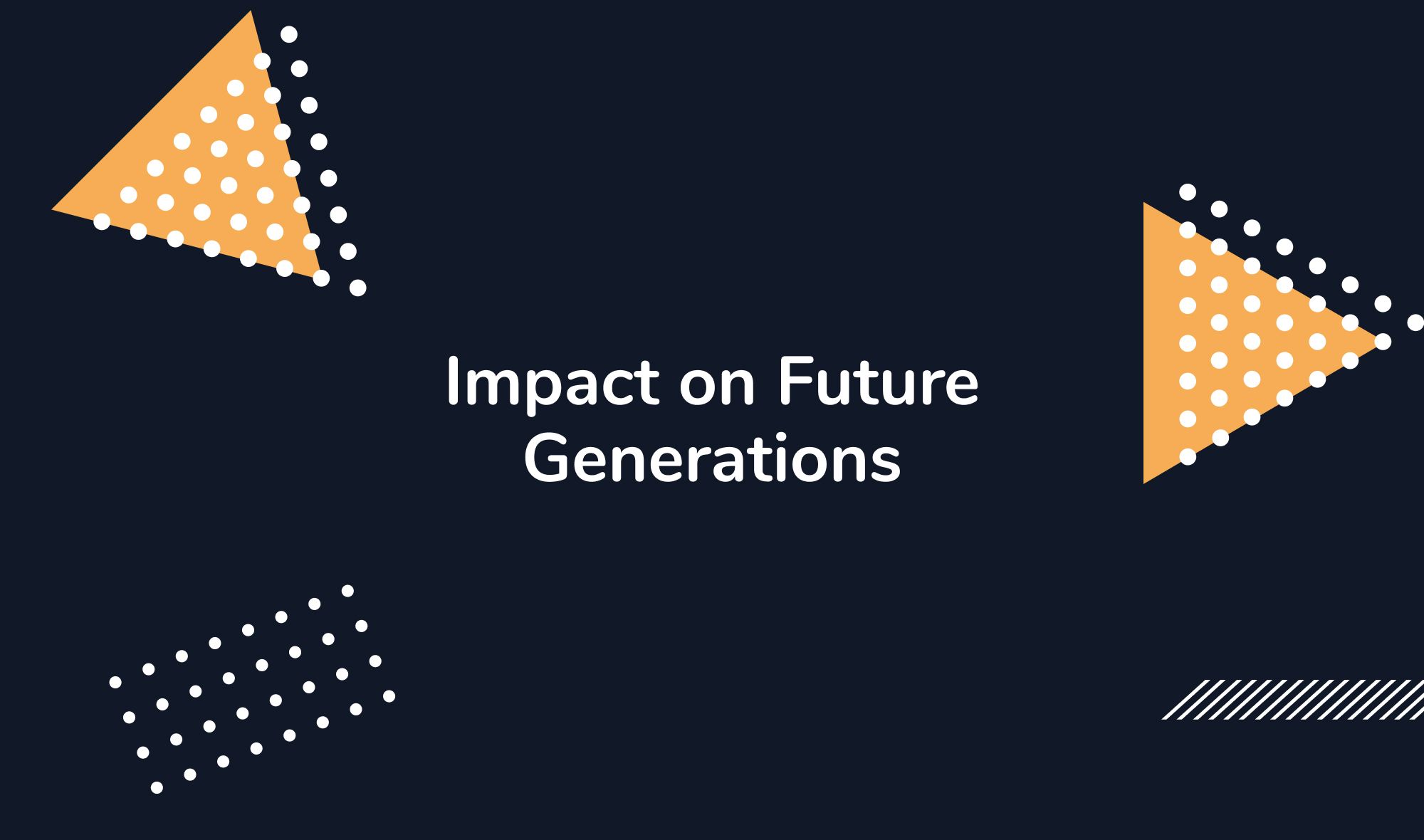Generativity vs Stagnation: Navigating Middle Adulthood
By Julian Lewis • July 30, 2023
Key Takeaways
- Generativity versus stagnation is a crucial stage in Erikson's theory of psychosocial development, impacting middle adulthood.
- Embracing generativity leads to greater life satisfaction and a healthier aging process.
- Stagnation is not permanent. With self-awareness and action, individuals can transition towards generativity.
- Building relationships, acquiring new skills, and active community participation nurture generativity.
- Support and resources are available for individuals navigating this stage, ensuring they're not alone in this journey.

Life, in its intricate dance of growth and change, presents us with various stages. Each stage, like a stepping stone, builds on the next, leading us through the fascinating journey of human development. Today, we delve into an intriguing stage - middle adulthood, a critical point in life where the tension between generativity vs stagnation takes center stage.
In his seminal work on psychosocial development, psychologist Erik Erikson identified eight stages that span the human life, from early childhood to late adulthood. Each stage is marked by a specific psychosocial crisis that individuals must navigate to grow and mature. The seventh stage, occurring during middle adulthood, is dubbed the 'generativity versus stagnation' stage.
In this stage, middle-aged adults strive to make a positive difference, whether it be through raising children, developing new skills, or participating in community projects. If successful, they foster generativity - a deep sense of satisfaction from nurturing things that will outlive them. On the other hand, if they fail, they may stagnate, becoming self-absorbed or feeling disconnected.
Here, we explore Erikson's theory and its impact on middle adulthood. We'll dive into the concept of generativity versus stagnation, how it influences future generations and personal growth, and how to navigate this stage successfully. So, if you're on the cusp of this critical stage or find yourself deep within it, this post is for you.
We also discuss how to improve generativity and circumnavigate the pitfalls of stagnation. Furthermore, we'll touch on the importance of building meaningful connections, positive relationships, and practicing generativity for psychological well-being. After all, it's not just about sailing through this stage—it's about making waves that will ripple positively into the lives of the next generation.
By gaining a greater understanding of this psychosocial stage, you'll not only enhance your self-awareness and personal identity but also lay a firm foundation for healthy aging and life satisfaction. So, let's dive in and chart the course for this incredible journey of self-reflection and personal growth.
Learn more about Erikson's stages of psychosocial development and discover how they shape our lives and well-being.
Join our Newsletter
Transform your career with our personal growth insights. Get one valuable tip right in your inbox every Saturday morning.
Erikson's Theory of Psychosocial Development
Erik Erikson, a renowned psychologist, made significant strides in the realm of psychological sciences with his theory of psychosocial development. He proposed that humans go through eight stages of psychosocial development, each marked by a specific conflict that contributes to a major aspect of personality development. This developmental journey starts with early childhood and culminates in the eighth and final stage in late adulthood.
Each of Erikson's stages is a sequential period of life dictated by the tension between two opposing psychosocial attitudes or outcomes. As individuals navigate through these stages, the resolution of each stage's psychosocial crisis results in the development of a basic virtue, a positive personality trait that will aid them through subsequent stages.
The sixth stage, for instance, often experienced in young adulthood, deals with the crisis of intimacy versus isolation. Here, individuals attend university programs, start their careers, and seek to build meaningful personal relationships. Overcoming this stage successfully paves the way for the seventh stage - middle adulthood - and the ensuing generativity versus stagnation crisis.
Erikson identified generativity vs stagnation as a critical juncture in human development. During this middle adulthood stage, individuals grapple with their contributions to the world, particularly to future generations. They question whether they've made a positive difference and if they'll leave a positive legacy. It's a time for self-reflection and self-awareness, assessing the paths taken in life and the footprints left behind.
The significance of generativity versus stagnation in Erikson's theory cannot be understated. Successfully navigating this stage leads to a sense of accomplishment and satisfaction, fostering well-being. Conversely, stagnation can result in feelings of disconnection and self-absorption, affecting psychological well-being.
The Onset of Middle Adulthood: The Stage of Generativity vs Stagnation

As individuals move from young adulthood to middle adulthood, they encounter the pivotal seventh stage of Erikson's theory - generativity versus stagnation. The stage is a crucial turning point, a time where self-centered attitudes make way for a greater sense of responsibility towards younger generations. In relation to this, understanding the stages of a male midlife crisis and how to deal with each can further aid in navigating this crucial stage.
During this period, middle-aged adults strive to establish their legacy, be it through raising children, teaching new skills to the next generation, or becoming involved in community projects. This shift towards nurturing things that will outlive them defines the concept of generativity. It encapsulates a profound need to contribute positively to the world and future generations. In essence, it's about creating, fostering, and guiding the next generation.
On the other hand, failure to develop generativity leads to stagnation - a state where individuals feel they have done little to nothing of value in their lives. This stagnation stage can result in self-absorption, decreased emotional well-being, and poor quality social connections. Individuals may feel disconnected, experience a midlife crisis, or grapple with identity issues.
The challenges of middle adulthood and the generativity versus stagnation crisis are significant. Yet, overcoming these challenges leads to a deep sense of life satisfaction and personal growth, paving the way for the eighth and final stage of Erikson's theory - integrity versus despair. Successfully navigating this stage of generativity versus stagnation is key to ensuring healthy aging and continuing on the path of positive human development. Learn about the vital role of middle managers in organizations here.
Join our Newsletter
Transform your career with our personal growth insights. Get one valuable tip right in your inbox every Saturday morning.
Impact on Future Generations: The Ripple Effect

The potency of generativity lies in its capacity to shape and influence future generations. By fostering positive relationships, mentoring younger individuals, contributing to community projects, or raising children with care, generative adults have a profound impact on the world around them. They impart values, skills, and wisdom to younger generations, who then carry this knowledge forward.
Consider the case of a teacher who goes beyond the curriculum to instill a love of learning in her students. Her passion and dedication, her generativity, could inspire a student to pursue a career in academia. In turn, that student may inspire others, setting off a ripple effect that reaches far into the future.
Generativity is also evident in family units. Parents who invest time and effort into their children's development not only aid their child's growth but also lay the groundwork for how their children will raise their offspring. This ripple effect carries the parents' generative efforts forward, influencing future generations in a substantial way.
The impact of generativity on shaping the next generation is immense. It's a positive cycle, where the effects of one generation's generativity ripple out to touch the lives of those that follow.
When Stagnation Takes Hold: Consequences and Signs

Stagnation, as defined in Erikson's theory, is a state of self-absorption and inactivity where individuals are not actively contributing to society or nurturing the next generation. It is a time of personal dissatisfaction, marked by a sense of disconnect from society and feelings of unproductivity.
This stagnation stage negatively impacts psychosocial development and emotional well-being. Individuals stuck in this phase may become self-absorbed, exhibit poor performance at work, or struggle to form or maintain personal relationships. They may also display a lack of interest in community projects or local activism, revealing an overarching lack of concern for future generations.
Several signs can indicate the onset of stagnation. These may include a constant feeling of boredom, dissatisfaction with one's life, and a lack of interest in new experiences or learning new skills. Such people may also display a reluctance to lend aid to others, whether that be time or resources, demonstrating a lack of generativity.
Recognizing these signs in oneself or others can be the first step towards addressing stagnation. It's important to remember that stagnation is not a dead end but a stage of psychosocial crisis that can be resolved. Overcoming this phase opens the door to the development of generativity, allowing for personal growth and a greater sense of life satisfaction.
To understand more about stagnation and its impact on psychosocial development, visit this informative article.
Shifting from Stagnation to Generativity: Steps for Positive Change
While stagnation can lead to a lack of fulfillment and diminished life satisfaction, the good news is that it's not a permanent state. Understanding the need for change is the first step toward shifting from stagnation to generativity.
To start, individuals need to recognize the value of generativity. Generativity versus stagnation is a key concept in Erikson's theory of psychosocial development. It's about making a positive difference, contributing to society, and nurturing the next generation. When individuals practice generativity, they develop a greater sense of well-being and a deeper connection to the world around them.
Practical steps to nurture generativity and combat stagnation include:
- Self-Reflection: Reflect on personal values, life goals, and personality traits. This can lead to a better understanding of self and pave the way for personal growth.
- Building Relationships: Developing meaningful connections with others can also boost one's sense of generativity. This can be achieved by improving communication skills, investing in personal relationships, or participating in community projects.
- Develop New Skills: Learning and growth are key aspects of generativity. Whether attending university programs or picking up a hobby, acquiring new skills keeps individuals mentally engaged and contributes to their overall psychological well-being.
To learn more practical steps to nurture generativity and combat stagnation, visit this helpful article.
Case Study: Successfully Navigating the Generativity vs Stagnation Stage
Navigating the generativity versus stagnation stage successfully can result in a deep sense of satisfaction. The story of Jane, a middle-aged woman, serves as a compelling case study.
Jane had been in a stagnation stage for several years. She felt disconnected from her life and was unfulfilled by her job. After a serious self-reflection and with support from her family, Jane decided to make a change. She enrolled in a university program for a completely new career and started volunteering in her local community. Jane began to feel a shift in her emotional well-being as she developed generativity.
This transition from stagnation to generativity was not immediate, but Jane's determination and continuous efforts helped her navigate this crucial seventh stage of Erikson's stages of psychosocial development successfully. She began to experience a greater sense of life satisfaction, a stronger connection to her community, and a renewed interest in her future.
Jane's story provides hope and guidance for those stuck in a stagnation stage. It demonstrates that with self-awareness, courage, and action, individuals can transition from stagnation to generativity, leading to healthier aging and a more fulfilling human life.
To delve deeper into Jane's journey, read this inspirational article. For a comprehensive guide on how to engage in fruitful self-reflection, don't hesitate to read our blog post on 45 self-reflection questions to nurture your mind, body, and soul.
Conclusion: The Power of Generativity and Embracing the Next Stage
In the journey of human development, the transition into middle adulthood brings a unique challenge - the struggle between generativity and stagnation. As part of Erikson's theory of psychosocial development, this seventh stage is a pivotal period, often associated with the notorious midlife crisis.
Generativity, in contrast to stagnation, is a positive force. It enables individuals to make a significant impact on society and future generations. Shifting from stagnation to generativity leads to healthier aging, improved life satisfaction, and an enhanced sense of well-being.
Remember, stagnation is not a permanent state. It's possible to navigate this stage successfully, as shown by our case study, Jane. With self-awareness, continuous learning, building relationships, and active participation in the community, one can develop generativity and leave a positive legacy.
Navigating this stage may be challenging, but remember that support is available. You're not alone in this journey. You can learn more about resources and support available for this stage at Zella Life Coaching.
Take courage and embrace this next stage of your life with determination and optimism!
Read more about: Well-being
About Julian Lewis
Julian Lewis is a driven and accomplished professional with a passion for driving positive change in the business world. He is the co-founder and COO at Zella Life.
His own experience as a professional of color in a Fortune 500 company led him to discover the limitations for advancement that many professionals like himself face. Determined to reach his full potential, Julian became an established business coach and entrepreneur, committed to supporting others in their pursuit of personal and professional growth.
Today, Julian is a recognized corporate trainer, coach, and leader, known for his ability to leverage real-life experiences and evidence-based methodologies to affect positive change within individuals and organizations. As the leader of Zella Life's coaching division, he is dedicated to empowering individuals and businesses to achieve their full potential.